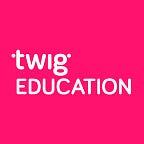What impact has the pandemic had on education?
For students and teachers around the world, the last year has been a roller coaster. When the pandemic hit in early 2020, countries around the world imposed school closures, with the view of “going back to normal” as soon as possible. However, many students and teachers are still doing distance learning full time, while others are adapting to a hybrid of in-school and at-home learning.
At the middle of March 2020, 44% of learners worldwide were out of class some or all of the time, and by mid-April this number had risen to 84.5%, with almost 1.5 billion students in 165 countries affected by school closures. (1) To keep learning going during this time, teachers had to completely change the way they taught. Teaching resources were adapted, lesson plans updated, and e-learning platforms introduced, all with the goal of making sure students didn’t miss out on their education. Asynchronous learning-where students take in content independently and report back to the teacher-became popular, paired with synchronous learning, with the teacher conducting online lessons through software such as Zoom or Google Classroom.
Governments around the world responded by offering guidance documents and training, while also providing free education resources via TV, radio, and the internet. LA Unified School District in the US partnered with the TV network PBS to offer local educational broadcasts, (2) while the UK’s national TV network BBC launched a virtual learning series called Bitesize Daily. (3) Meanwhile, online learning platforms and online conferencing companies also offered their support. For example, Bangalore-based BYJU offered free live classes, and Singapore-based Lark offered teachers and students unlimited video-conferencing time, real-time project editing, and more. (4) Other organisations also offered their support. UNESCO worked with many countries to minimize the learning disruption caused by the pandemic, supporting the implementation of distance learning programmes and recommended the use of open educational applications. (5)
For us at Twig, supporting teachers and students is the most important thing we do, and to help out we have offered free trials to our supplemental products, as well as access to specially made independent learning packs. We also worked directly with governments around the world-collaborating with Ministries of Education in Mexico, Colombia, Guatemala, Iraq, and more to offer free STEM content to students and teachers, as part of our mission to improve science literacy globally. In Iraq, for example, Twig videos are published on the Ministry of Education’s online platform Newton. In Mexico, Twig content was published on the government’s new distance learning site, and Twig films were broadcast on national television as part of the globally recognized initiative Televisión Educativa. Similarly, we have been incredibly proud to work with UNICEF on the Learning Passport, a digital personalized learning platform for children and young people.
As of February 2021, 28 countries in the world have nationwide school closures implemented. The majority of the world’s countries either have local school closures or are doing a hybrid approach where students spend some days in schools and some at home. Worldwide, almost 222 million learners are currently affected. (6) So what will the future look like?
While some studies show that students retain more material when learning online, (7) many studies also show the importance of in-person learning. According to a study by the OECD, success in school performance relies on close relationships with teachers. (8) Naturally, online learning has made it difficult for teachers to help those who are struggling. Especially affected are students from disadvantaged families who may not have easy access to digital devices, or whose parents are not able to help them with homework. These students would normally have been able to use school equipment and receive in-person support from their teachers.
So while schools are likely to reopen as much as possible, the hybrid approach has become increasingly popular and is likely to stick around for quite a while, if not for years to come. Moving forward, teachers will have to keep developing and adapting their teaching methods-and educational companies will have to offer creative solutions to make sure that all children are supported.
At Twig Education, we will continue to respond to the needs of learners and educators around the world. In the US, we’ve launched Twig Distance Learning, a flexible distance learning program that supports both synchronous and asynchronous learning, with on-demand instruction from our experienced Twig Coaches. Around the world, we are continuing to support teachers and students through improving our learning resources and offering guidance on how they can be adapted for distance learning.
Sources:
- https://en.unesco.org/covid19/educationresponse
- https://deadline.com/2020/03/pbs-socal-kcet-lausd-los-angeles-schools-close-1202883111/
- https://www.bbc.co.uk/mediacentre/latestnews/2020/education-teachers
- https://www.weforum.org/agenda/2020/04/coronavirus-education-global-covid19-online-digital-learning/
- https://en.unesco.org/news/290-million-students-out-school-due-covid-19-unesco-releases-first-global-numbers-and-mobilizes
- https://en.unesco.org/covid19/educationresponse
- https://www.shiftelearning.com/blog/bid/301248/15-facts-and-stats-that-reveal-the-power-of-elearning
- http://www.oecd.org/coronavirus/policy-responses/learning-remotely-when-schools-close-how-well-are-students-and-schools-prepared-insights-from-pisa-3bfda1f7/
Originally published at https://twigeducation.com on February 5, 2021.
